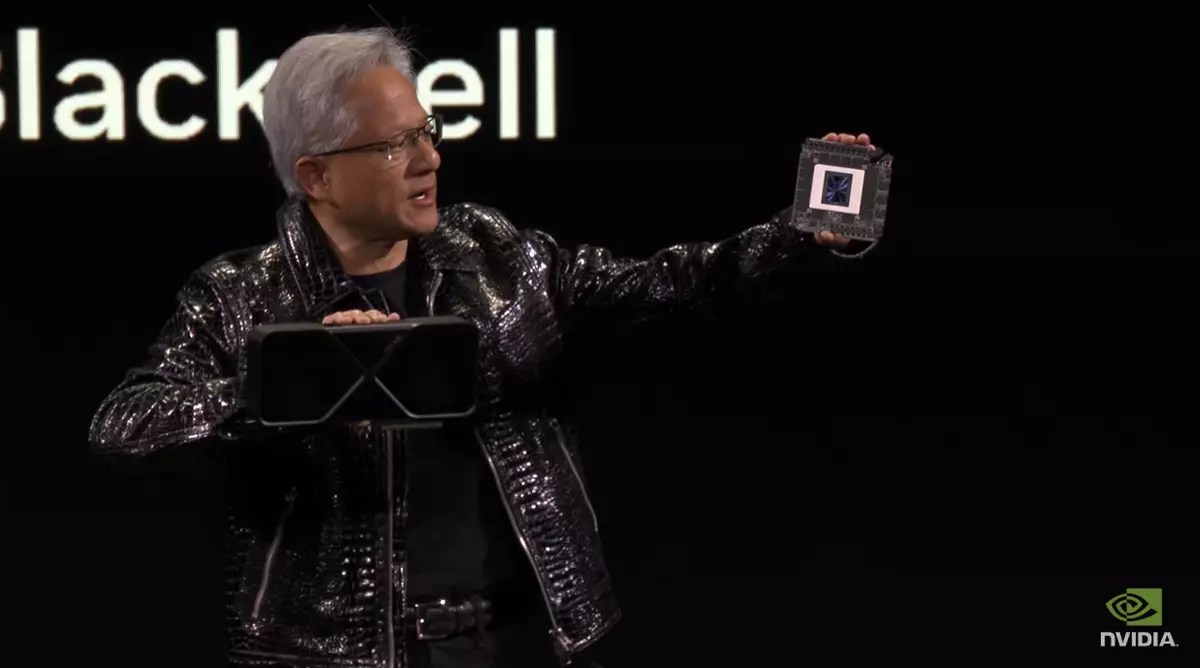Nvidia has consistently led the charge in the graphics processing unit (GPU) industry, blending cutting-edge technology with consumer-friendly pricing. At the CES 2025 keynote, CEO Jen-Hsun Huang unveiled the new RTX Blackwell GeForce GPUs, a series poised to redefine the landscape of high-performance gaming. The RTX 5070 has sparked considerable interest due to its compelling promise: delivering performance comparable to the RTX 4090 at nearly one-third of the price. But does this claim hold up under scrutiny?
The introduction of the RTX 5070 at $549 is indeed a notable move in an industry known for soaring prices. The RTX 4090, previously the titan of GPU performance, launched at $1,599. The apparent parity in capability between these two graphics cards leads to a critical question: how can Nvidia deliver such advanced performance for a fraction of the cost? The answer lies in Nvidia’s latest innovations, particularly the inclusion of DLSS 4 technology.
DLSS, or Deep Learning Super Sampling, has fundamentally transformed the way graphics are rendered in real-time. The new Multi Frame Generation feature allows the GPU to compute one frame while generating up to three additional frames through advanced AI algorithms. This leap in technology not only enhances performance in supported applications but also redefines the user experience by smoothing out frame rates, improving responsiveness, and ultimately elevating immersion in gameplay.
While the RTX 5070’s price is indeed eye-catching, it’s essential to contextualize Nvidia’s claim of RTX 4090-level performance. This assertion is heavily reliant on the capabilities of the DLSS 4 technology. The RTX 5070, when operating without the support of DLSS 4 and Multi Frame Generation, may not inherently outperform its more expensive counterpart. However, in the 75 apps and games set to support DLSS 4 at launch, users will experience cutting-edge performance, demonstrating Nvidia’s subtle yet impactful approach to marketing.
This strategic shift in Nvidia’s approach to performance is indicative of a broader trend within the technology space, where enhancing software capabilities can often lead to staggering improvements in performance metrics. The overarching question for potential buyers remains: Is it the hardware or the software that is truly responsible for this new generation of performance?
Nvidia’s new RTX Blackwell series doesn’t stop with the RTX 5070. The full range includes the high-end RTX 5090, priced at $1,999, expected to offer twice the performance of its predecessor, the RTX 4090. This steep price point reflects its place at the apex of Nvidia’s offerings. Meanwhile, the RTX 5080 maintains the same price as the previous generation’s RTX 4080 Super, suggesting that Nvidia is keen on offering sustained competitive pricing despite advancements in power.
This strategy is particularly noteworthy given the rumors swirling around anticipated price hikes for the 50-series. With meteoric price increases across many technology sectors, Nvidia’s alignment of pricing with performance expectations brings a welcome relief to consumers. As is evident from Huang’s announcement, the landscape of GPU pricing may stabilize, making high-end gaming more accessible.
The anticipation surrounding Nvidia’s RTX Blackwell series is palpable, especially with the impending launch dates. The RTX 5090 and 5080 are set for release on January 30, followed by the RTX 5070 Ti and RTX 5070 in February. The market watches closely, as these GPUs could either reinforce Nvidia’s dominance or invite fierce competition from other AMD contenders.
As these models hit the shelves, gamers and professionals alike will be eager to test Nvidia’s ambitious claims. If successful, the RTX Blackwell GPUs could not only solidify Nvidia’s legacy but also reshape the entire gaming experience through unparalleled graphical fidelity and performance.
Nvidia’s unveiling of the RTX Blackwell GPUs marks a significant milestone in the evolution of gaming technology. With competitive pricing coupled with innovative features, the series could set a new standard in the industry. As the launch dates approach, it remains to be seen how these graphics cards will perform in real-world scenarios. For both casual gamers and professional eSports athletes, Nvidia’s developments promise to usher in an era of gaming that celebrates performance leaps and technological marvels.


Leave a Reply